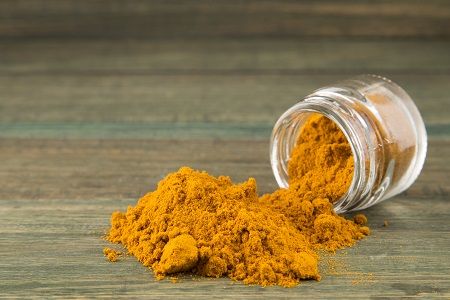Article
Spice Found in Curry Appears to Reduce Inflammation
Author(s):
Presented at PAINWeek 2016 in Las Vegas, Nevada, researchers looked at how turmeric could be used as a safer, more tolerable option for pain control.

Using turmeric for medicinal purposes is not a new concept to Southwest India; but most other people recognize the spice as a component of curry. Presented at PAINWeek 2016 in Las Vegas, Nevada, researchers looked at how the natural product could be used as a safer, more tolerable option for pain control.
But how could a spice possibly fight against pain? Well, turmeric contains curcuminoids (along with other phytochemicals and proteins) that are active compounds. The curcumin is what really drives the therapeutic factor, investigators believe. The problem is that oral turmeric has poor absorption, rapid metabolism, and excretion. So the team went on to combine the product with tumerene (turmeric oil) which blocks metabolic pathways. This gives the turmeric a 10-fold increase in absorption.
A cohort of 820 people with osteoarthritis were given a curcumin extract (Flexofytol). Within the first six weeks, many patients reported an improvement in pain control, articular mobility, and quality of life. It was well-tolerated as well. In fact, the researchers found that more than half of the patients stop taking their other medications including analgesic, anti-inflammatory, and chondroprotective drugs.
- MD Magazine is on Facebook, Twitter, Instagram, and LinkedIn!
The curcumin extract was also given to 50 postsurgical patients in a double-blind, placebo-controlled study. The findings revealed that all of the patients who received the curcumin were pain free after three weeks. In addition, the patients used significantly less analgesic agents when compared to those who took the placebo.
A third study consisted of 46 men who had inguinal hernia repair. They were randomly assigned to receive either 400 mg of curcumin, 100 mg of phenylbutazone, or 250 mg lactose (placebo) three times a day for five days. Those who received curcumin or phenylbutazone reported similar outcomes on the pain and tenderness scale of 0 to 12. But curcumin actually reduced inflammation more and was found to be safer.
The positive findings do not come without possible concerns, however. The team also pointed out that while the US Food and Drug Administration has determined that turmeric is “generally regarded as safe,” officials have not reviewed the product for therapeutic indications.
“The interest in natural products may be a response to finding safer and more tolerable alternatives for pain control,” the researchers concluded. “Turmeric has long been associated with home remedies and new studies reveal its curcumin may have unique anti-inflammatory properties that can reduce pain with few side effects.”
Also on MD Magazine >>> More News from PAINWeek 2016 in Las Vegas
*Poster sessions will be available for viewing starting on September 7 at 3 p.m. PST




